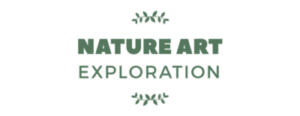Next growing season, my family and I are embarking on the adventure of opening a small, family-run native plant nursery. We spent months setting up the greenhouse this past fall and have been busy working towards getting the operation up and running to set-up plant sales at local farmers’ markets. Although we won’t be opening up for online sales, I still want to share some blog posts focused on native plant gardening. It is my bliss to share my bliss! Nature Art Exploration hopes that the posts are helpful to you in learning about native plants and how you can get started incorporating them into your own backyard. This first post we’ll explore the benefits and several, beneficial gardens that may fit into your gardening dreams this upcoming spring.
What are the Benefits of Native Plant Gardening?
Gardening with plants native to the area you live can be a fantastic way to connect to the land in which you are part of. It provides a deep understanding of the relationships that have been existent in the native landscape for centuries and gives insight into how these plants are pertinent to thriving ecosystems. It is the most fantastic feeling to see a patch of land go from a monoculture of green grass to a biodiverse gem calling in bees, butterflies, hummingbirds, song birds, and other wildlife. You will beautify your backyard through increased biodiversity and create a space to share and connect with others alongside the wildlife that frequent your yard.
Gardening, in general, can be a great way to boost your mental and physical health. It helps relieve stress, uplifts your mood, and improves your emotional well-being. Getting into a regular gardening practice can lower your blood pressure, improve physical fitness, and lower your cortisol levels, a hormone released by the body when experiencing stress. Getting your hands in the dirt has a way of reconnecting you to the earth and recharging your spirit. It is no wonder why many counselors, therapists, and other people in the helping and healing professions recommend gardening and many even use gardening within their therapeutic relationships. Taking up native plant gardening can do wonders for your overall well-being.

In addition to providing essential habitat for wildlife, native plants improve water quality through filtering out pollution and excess nutrients. Their deep root systems do a fantastic job of soaking up water helping to decrease storm water runoff. Air quality in your neighborhood is also improved, since native plant gardens reduce the amount of area that needs mowing in your yard. Many people decide to completely return their yards to what it may have looked like in their area prior to the trend of the green monoculture. This completely eliminates the need for mowing and puts an end to that nasty noise pollution nobody in the neighborhood likes including you.
The amount of time spent with the upkeep of the green monoculture has always astounded me. The dutiful day of mowing is dreaded by so many, and the amount of time wasted in its observance completely absurd. Cut-down on some of that wasted time and decide to do something else instead! Once your native plant gardens are established, little upkeep will be needed. Nature will do most of the work and additional watering will not be necessary. Plus, you can forget about those nasty herbicides and pesticides so often used on the common lawn. They are SO devastating to the environment!
What are a Few Gardens to Get Started With?
Whether landscaping your backyard, gardening in an alleyway, or planting in a community space, it can sometimes be easier to focus on a certain garden type suited to your plot of earth. There are a lot of different types of gardens you could incorporate into the green space you choose to work with. I’m only going to cover a few here. Always consider your garden space and do a site evaluation before you get started. You always want to make sure you select plants that will thrive in the home you plan to give them. We’ll get into that more in a future post. For now, I want to explore several types of native plant gardens.



*This post contains affiliate links. A small percentage of all the purchases you make by following the above links will help support this site. Thank you for choosing to support Nature Art Exploration!*
Pollinator Gardens.
Pollinator gardens are one way to go. I love watching the butterflies, hummingbirds, native bees, and other pollinating insects that frequent my pollinator garden. Find out who these visitors are and which native plants would best welcome them to your yard. Do your research. You don’t want to incorporate plants that aren’t beneficial to your area. Many different types of butterflies would love to make your garden a resting spot. You could create habitat that welcomes and supports butterflies such as the Monarch throughout their life cycle. Check out the past post Creating a Family Butterfly Garden! By including hummingbird, bee, and other pollinator favorites, you will attract a wide-range of beneficial visitors to your yard.
Don’t forget to ask the land in planning your project and prior to planting. By observing who already grows in your yard, evaluating the conditions of your site, and looking to the local native plant landscape for inspiration, a good pollinator garden can be designed to benefit the visitors to your yard and work in harmony with the land you live on. If you need to ask your local native plant provider or reliable native seed company which plants may do best in your site, do so. It can be a lot of fun to do your own research as well. You can also get involved with local native plant groups such as Wild Ones or find classes offered in your community to learn more.
Rain Gardens.
Rain gardens are a fantastic way to help filter storm water runoff improving the water quality in your neighborhood. The rain that runs off your roof or paved surface areas can be significant and moreover can carry pollution to nearby lakes, rivers, and streams. Studies have shown that 70% of the pollution that ends up in waterways is carried there by storm water. Think about how you can do your part to cut down on that pollution by creating a rain garden that will help filter the runoff from your yard. If we all do our part, water pollution can be significantly decreased. Check out the following short video on how to get started with creating a rain garden!
Specific Habitat Restorations or Gardens.
Other gardens or restoration projects could focus on a specific habitat. Currently, only 2% of Minnesota’s native prairies remain from the original 18,000,000 acres which vastly covered the state prior to European settlement. That is devastating. You may decide to create a small pocket of prairie in an urban area or even commit to a larger prairie restoration project if your site is suiting. What plants would do best in your soil and light conditions? Would shade loving plants do best? Perhaps, you’ll want to focus on creating a woodland shade garden with native plants that thrive in the understory of specific woodland habitats. Look to inspiration in nearby wooded areas similar to your shaded backyard. Make sure to check out the USDA Plants Database to make sure your plant choices are native to your area and not invasive, noxious, or introduced species.
Which plants would be best suited for the level of precipitation you receive and amount of moisture retained in your soil? If you have a wetter site you’ll be working with, a wet meadow planting may be an option. There are so many beautiful wet meadow plants that wouldn’t mind finding a home where they get wet feet from time to time. They would also love to suck up the extra water in a wet area of your yard. Many also call in hummingbirds, butterfly, and other pollinators. The increased biodiversity can really beautify any area. Do make sure, though, that the place you choose to plant is a safe place for wildlife to be called in. It would be a shame to invite these visitors only to find out later the neighbors spray nearby with toxic pesticides or herbicides. Look into the environmental quality of your proposed garden and ask neighbors if need be to find out about adjacent land use. Find a healthy area that will not pose threats to the wildlife visitors who will frequent your garden.
Edible or Medicinal Gardens.
This is one of my personal favorites as I have a strong interest in foraging and wildcrafting plants that grow around my area. Growing native plants can be a great way to connect with the land while learning how to nourish and keep your family healthy by foraging and harvesting wild food and medicine. The plants that are native to your area have been a source of food and medicine since the beginning of time. It doesn’t matter what country or continent you live on. Indigenous people and earth-based cultures around the world have looked to the land to understand the plant beings, sought to live in harmony with them, and learned the ways these allies work with us for health and nourishment. Planting a selection of native plants to grow for food, tea, and various remedies can help connect you to the earth you are part of. It’s a beautiful time to tend your garden, care for your garden, and love your garden. It can fill you with respect for the plant beings, and it can open your eyes to what many have forgotten in our current times. Respect for the creator’s garden.
Thank you for joining Nature Art Exploration! I hope you’ve enjoyed this post as a summary of the benefits to native plant gardening. Perhaps, one or more of the garden ideas will find its way into your backyard next growing season. Please, stay tuned to explore how you can get started with native plant gardening. Subscribe or follow via the social media links. Up here in northern Minnesota it can be a long winter to pass with garden dreams. As always, feel free to comment below to join in on the explorations. Nature Art Exploration loves hearing from you!


